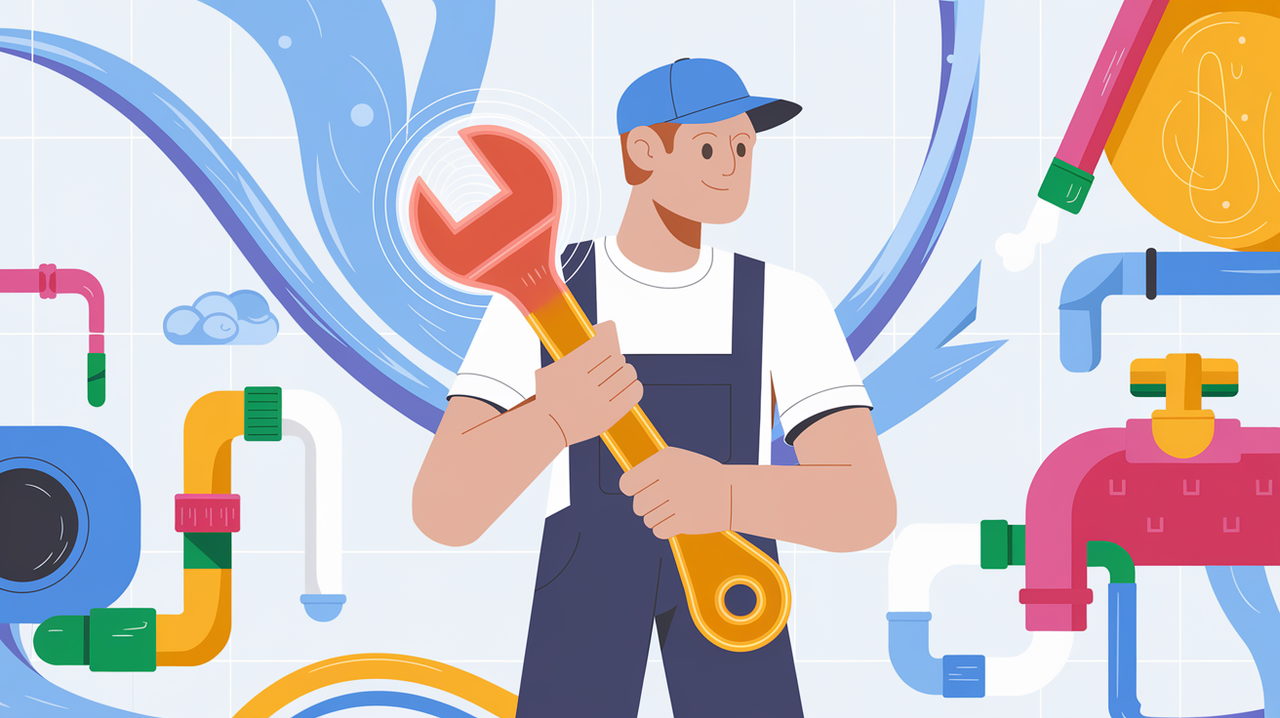Introduction
If you've ever turned on your faucet only to be greeted by a weak, sputtering stream of water, you may have encountered one of the most common plumbing problems. This issue is often due to a clogged faucet aerator—an essential component that regulates water flow and improves pressure. Fortunately, cleaning a faucet aerator without removing it is a straightforward task that can restore your faucet's functionality in no time. In this article, we'll explore quick tips for cleaning your aerator, delve into common plumbing issues, and provide helpful DIY plumbing repair tips.
Cleaning a Faucet Aerator Without Removing It: Quick Tips!
Cleaning a faucet aerator without taking it off may sound tricky, but it’s quite manageable with the right technique. Here’s a step-by-step guide to make the process seamless:
Gather Your Materials: You'll need vinegar or a descaling solution, an old toothbrush, and a soft cloth. Turn Off the Water: Always ensure that the water supply to the faucet is turned off before you start cleaning. Soak the Aerator: Use a small container to soak the aerator in vinegar for about 15–30 minutes. The acidity helps dissolve hard water mineral deposits. Scrub Gently: After soaking, use an old toothbrush to scrub away any remaining buildup gently. Rinse Thoroughly: Turn on the water supply slowly and test the faucet to ensure everything flows smoothly. Wipe Down: Finish by wiping down the exterior of the faucet with a soft cloth.By following these steps, you can effectively clean your aerator without needing any tools or disassembly.
Understanding Common Plumbing Problems
What are the Most Common Plumbing Problems?
In any home, plumbing issues can arise unexpectedly. Here are some frequent challenges homeowners face:
- Leaky Faucets: Often caused by worn-out washers or seals. Clogged Drains: Hair, grease, and foreign objects are usual culprits. Running Toilets: A faulty flapper valve can cause this annoying problem. Low Water Pressure: Hard water buildup or leaks might be responsible. Water Heater Issues: Sediment buildup can hinder performance.
Identifying these problems early can save significant money on repairs.
Signs of Plumbing Problems
Knowing how to recognize signs of plumbing issues can help you act swiftly:
- Unpleasant odors emanating from drains indicate clogs. Water stains on ceilings or walls suggest leaks behind fixtures. Fluctuating water temperature may mean issues with your heater.
Causes of Weak Water Pressure
What Causes Water Pressure Problems?
Weak water pressure can stem from various factors:
Clogged Pipes: Mineral buildup narrows pipe passages over time. Leaks in System: Undetected leaks divert water away from intended areas. Faulty Pressure Regulator: If your home has one, it may require adjustment or replacement.Understanding these causes is vital in addressing weak pressure effectively.
How to Increase Water Pressure?
If you're struggling with low pressure, here are some quick fixes:

- Clean aerators and showerheads regularly. Inspect for leaks and repair them promptly. Consider installing a pressure booster if necessary.
Hard Water Effects on Plumbing
What are the Main Problems Caused by Hard Water in Plumbing Systems?
Hard water contains high levels of minerals like calcium and magnesium that can significantly affect plumbing systems:
Buildup in pipes leads to reduced flow rates over time. Fixtures like faucets may develop unsightly mineral stains and corrosion.Recognizing these effects allows homeowners to take preventive measures against hard water damage efficiently.
How Do You Fix Hard Water Buildup in Pipes?
To tackle hard water buildup effectively:
Use descaling solutions specifically designed for pipes. Regularly flush your system with vinegar or commercial cleaners as part of maintenance routines.Regular maintenance helps prolong pipe life and efficiency.
DIY Plumbing Repair Tips
Best Tools for Plumbing Repair
Equipping yourself with proper tools can simplify many plumbing tasks:
| Tool | Purpose | |------|---------| | Pipe Wrench | Tightening/loosening connections | | Plumber's Snake | Clearing clogs in drains | | Teflon Tape | Preventing leaks in threaded joints |

Having these tools handy ensures you're prepared for common fixes around your home.
Preventing Plumbing Leaks
Preventive measures go a long way:
Inspect hoses and fittings regularly for wear and tear. Ensure caulking around sinks and tubs remains intact to prevent moisture intrusion.
Proper vigilance helps avert costly repairs down the line!
Fixing Clogged Drains Fast
What are Examples of Common Plumbing Problems?
Some examples include slow-draining sinks, overflowing toilets, or gurgling sounds from pipes—each signaling potential blockages needing attention!
What Household Items Can Cause Major Pipe Blockages?
Common culprits include:
- Grease from cooking Coffee grounds Hair strands
Maintaining awareness about what goes down your drains is crucial!
FAQ Section
1. How do I know if my faucet aerator needs replacement?
If cleaning does not improve flow or if it's visibly damaged, it’s likely time for replacement.
2. Can a hidden aerator be removed without a key?
You may need http://ho-ho-kus-licensed-plumbers-in-bergen-county-i-6.image-perth.org/essential-wrenches-for-plumbing-repairs-what-you-need-to-know specialized tools if it's stuck; however, many hidden aerators have alternative removal methods based on design.
3. How do I clean calcium deposits from pipes?
Use vinegar or commercial descaling agents applied directly onto affected areas; let sit before scrubbing gently with an appropriate tool.
4. What dissolves limescale and hard water buildup?
Acidic solutions such as vinegar or citric acid effectively break down limescale deposits when applied correctly over time.
5. How do you unclog a drain quickly?
Start with boiling water followed by baking soda; consider using a plumber's snake for stubborn clogs after that!
6. How do I improve my faucet's water flow?
Cleaning aerators regularly coupled with ensuring no underlying pipe blockages will significantly enhance flow rates.
Conclusion
Cleaning a faucet aerator without removing it doesn't have to be intimidating! With just some everyday household items like vinegar and an old toothbrush at hand, you can restore optimal functionality to your faucets while also addressing common plumbing problems proactively through regular maintenance practices mentioned throughout this article! So next time you're faced with sputtering streams of water—remember these quick tips! Happy plumbing!